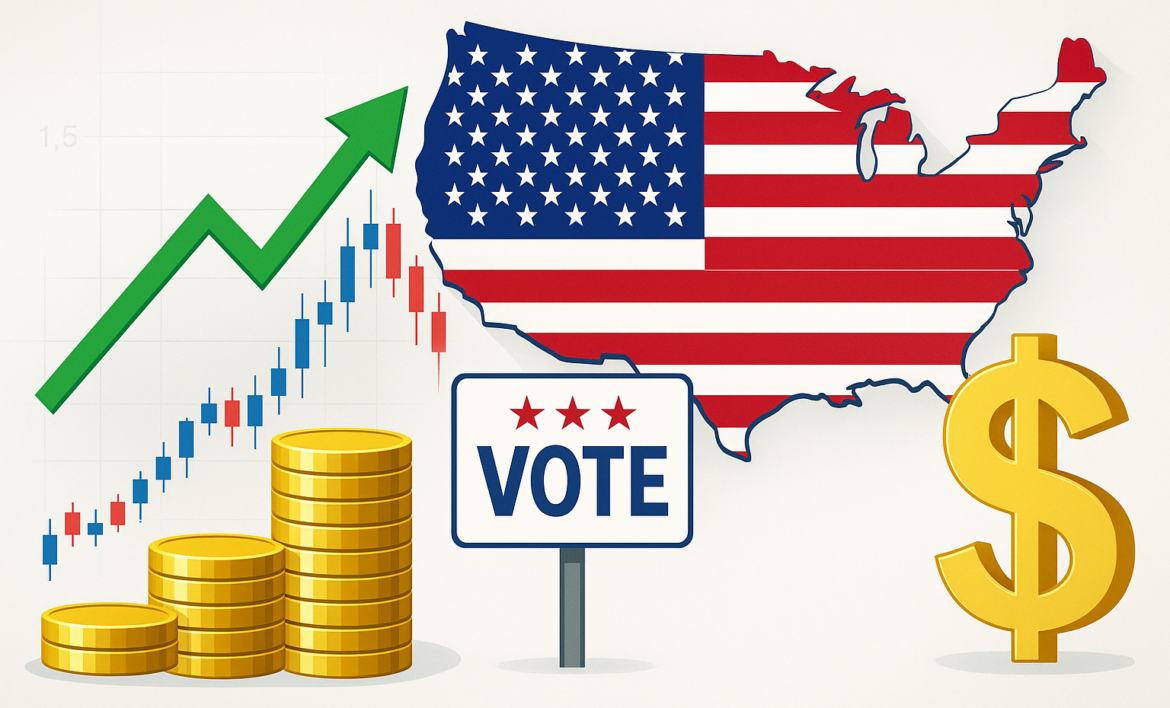As America prepares to go to the polls on the 5th of November 2024 to decide who their next president and leader of the Western world will be, the economy remains on the front burner. There was a brief interlude on the issue of the economy after the first presidential debate, in which the performance of President Biden at the debate raised questions about the state of his health and his ability to successfully lead the world’s most powerful country for another four years.
The issues being discussed reduced to the state of health of President Joe Biden and his ability to lead the country for another term of four years. It seemed as if it was going to be a one-horse race as Joe Biden’s approval ratings dropped significantly after the debate and the opposition candidate Donald J. Trump seemed to be on his way back to the White House until President Joe Biden did the unexpected and dropped out of the presidential race while endorsing his amiable Vice President to take his place as the candidate of the Democratic party.
This was a game changer for the Democratic Party as poll results taken after the endorsement showed that Kamala Harris was immediately able to close the gap that had been widening between Donald Trump and President Joe Biden and even surpassed him in the polls conducted by Ipsos/Reuters with a two percentage point lead, 44% to 42%.
From all indications, the race to the White House will be very tight and now that the issue of President Joe Biden’s health has been resolved, the economy would likely move back to the front burner as the presidential race continues. While we can revert and evaluate how well Donald Trump performed with the economy during his tenure as president, we would have to rely on the economic performance of the Biden Administration in which Kamala Harris is serving as the Vice President to evaluate her prowess with managing the economy.
During the Trump administration, GDP grew by 6.8% in his four years after discounting the plunge in the economy that resulted from the COVID-19-induced lockdown that sent the economy into a tailspin in the last year of his administration. The inflation rate was relatively low during his administration with prices rising by just 5% during his tenure while the unemployment rate was as low as 3.5%. Trump was also able to keep the wage growth rate above the inflation rate thereby increasing the purchasing power of Americans.
However, the U.S national debt increased by 39% reaching $27.75 trillion by the end of his term in office but the surge in debts was mostly attributed to the unprecedented $5 trillion pandemic response spending which the U.S government authorized to battle the COVID-19 pandemic and offer succour to millions of Americans affected by the lockdown while also extending support to numerous countries across the world.
On the economic front, Donald Trump was most notorious for his trade policies as he pursued a protectionist trade policy by hiking tariffs, primarily on imports from China while demanding that China also opens up their markets to American companies. However, the Chinese also retaliated and hiked tariffs on American goods thereby reducing the volume of American exports to China. The debate is still out whether his trade policy with China ended up being positive for the American economy.
On the flip side, the Biden administration started in January 2021 when the country was already recovering from the COVID-19 pandemic-induced depression in the economy and was able to oversee a vigorous rebound from recession with the U.S unemployment rate plunging to a 50-year low of 3.4% in early 2023. The administration’s annualized GDP growth rate is approximately 2.9% outpacing Trump’s 2.7% while the cumulative growth rate since Biden’s inauguration is 8.4% after adjusting for inflation. In terms of Job growth, 15.7 million jobs have been added to the economy under the Biden administration.
From the above analysis, it seems that the economy is performing better under the Biden administration compared to the Trump administration but we have to concede the fact that the Trump administration had to battle with a pandemic induced recession in the last year of his administration while the Biden administration enjoyed the economic surge that occurred as a result of the rebound in economic activities immediately after the lockdown. Also, it can be argued that the Biden administration is benefiting from some of Trump’s protectionist trade policies that boosted productivity within the American economy.
In retrospect, both administrations seem to have performed very well with the economy and America is today the fastest growing economy amongst its peers in the Western world but the threat of China upstaging America as the world’s most dominant economy looms and only Trump seems to be worried enough and prepared to take on the Chinese threat.
While it is certain that other issues like Kamala’s support for the LGBTQ community, Trump’s perception as a white nationalist and foreign policy direction will stir up more controversies in the race to the White House, when it comes to real issues that will be debated, the economy trumps them all.
Oshobi, a development economist, management consultant, and author writes from Lagos, Nigeria

